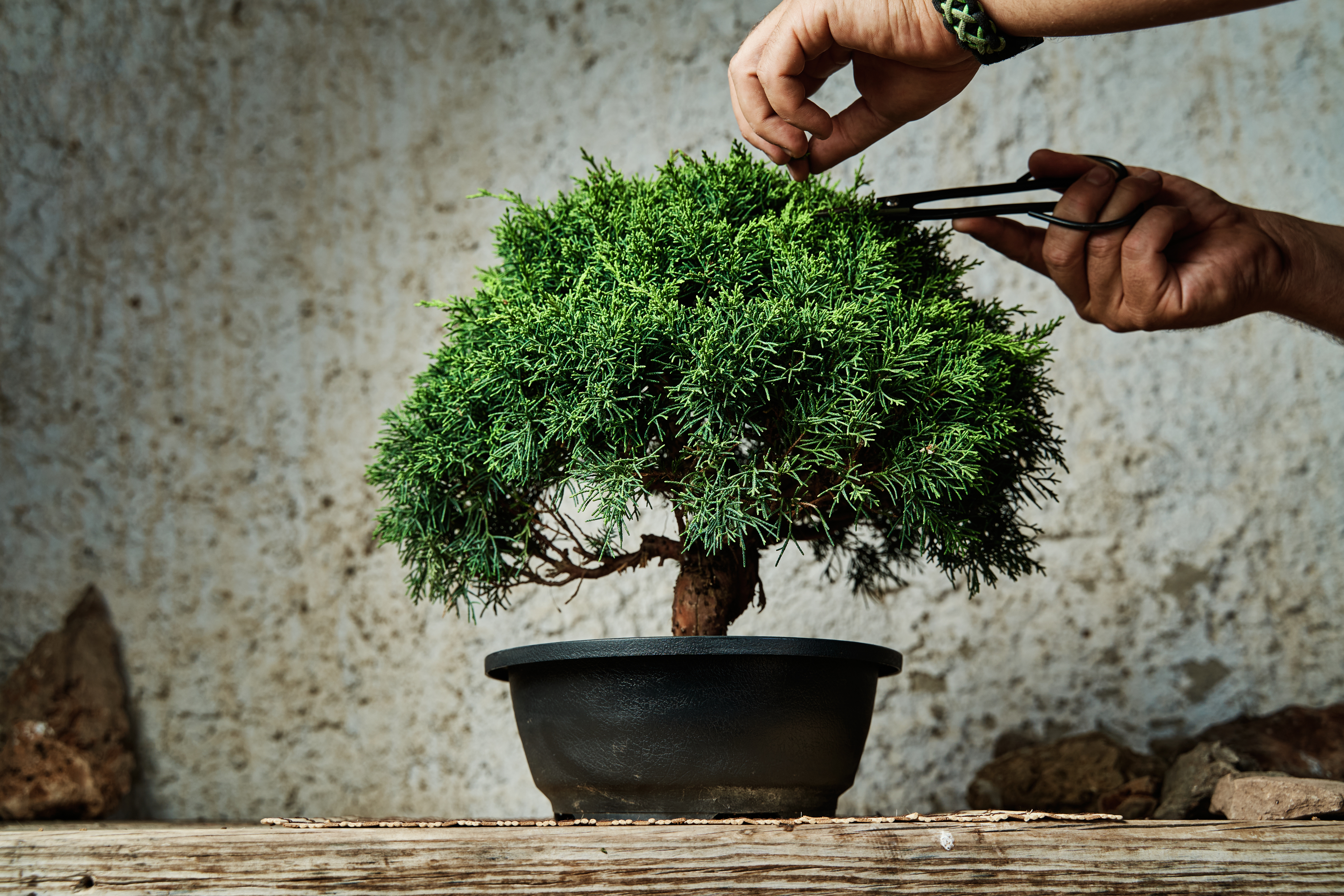CARE INSTRUCTIONS
Pruning your bonsai tree serves multiple purposes. Firstly, it helps control the size of the tree, keeping it compact and proportionate to its miniature form. Additionally, pruning allows you to shape the tree according to your artistic vision, encouraging denser growth in specific areas for a more aesthetically pleasing result.
INSTRUCTIONS
Continuous pruning: Regularly prune your bonsai tree to maintain its desired shape and size. Even if you purchased a pre-shaped bonsai with a trunk and branch structure you like, ongoing pruning is necessary to keep the tree small.
Get the right tools: Equip yourself with sharp and clean hand pruners. Sharp tools make cleaner cuts and promote faster healing.
Prune back branches: Allow branches to grow for a couple of nodes before pruning. Leave two to three nodes on the branch, which will encourage branching out on the remaining nodes.
For trees with an opposite leaf arrangement (two leaves attached opposite to each other), save one node during pruning, as it can result in two new branches. Examples include Chinese privet and Japanese maple.
For trees with an alternate leaf arrangement (one leaf attached at a time in an alternating pattern), save at least two nodes to encourage branching into two new twigs. Examples include Chinese elm and ficus trees.
Understanding nodes: Nodes are the spots on a twig where new branches can grow. They are located just above where leaves attach, often accompanied by small buds.
By following these steps, you'll be able to maintain the shape and size of your bonsai tree, fostering its aesthetic appeal and keeping it true to the art of bonsai cultivation.

TOOLS & MATERIALS
There are a number of different tools you can find adapted to growing bonsai. There are also some alternatives you can find that aren’t specifically meant for growing bonsai but will work well either way. Some of the tools and materials used when pruning are:
Bonsai scissors or small pruning shears (preferably with narrow, straight blades)
Bonsai cutters or knob cutters
A small saw
Wound sealant paste
When pruning bonsai it’s recommended to have small bonsai scissors or little garden shears for pruning the finer twigs of the tree. Choose a tool that suits you and makes it easy to reach twigs deeper in the foliage. The blades should be rather sharp in order to cut the twigs clean.
When it comes to removing bigger branches it’s best to use proper bonsai cutters. Either with a straight blade or a knob cutter for removing whole branches from the trunk. These are very sharp and leave as little damage as possible on the surrounding bark. Straight blade bonsai cutters are more versatile, while knob cutters will take a clean chunk of the wood when cutting. This is perfect when removing a whole branch as it leaves some space for the bark to grow over the wound and end in a smooth trunk once grown over the wound. A small saw can be handy when you need to remove branches or parts of the trunk that are too big even for the cutters. Choose a small saw with small serrations on the and a thin blade that will make a clean cut edge with as little frayed and harmed bark from the cut as possible.
Wound sealant paste is highly recommended by some growers while others think it's unnecessary. There are many different ones out on the market. Some contain active ingredients that are said to promote faster healing of the wound. Even without it, the tree will eventually heal the cut wound.